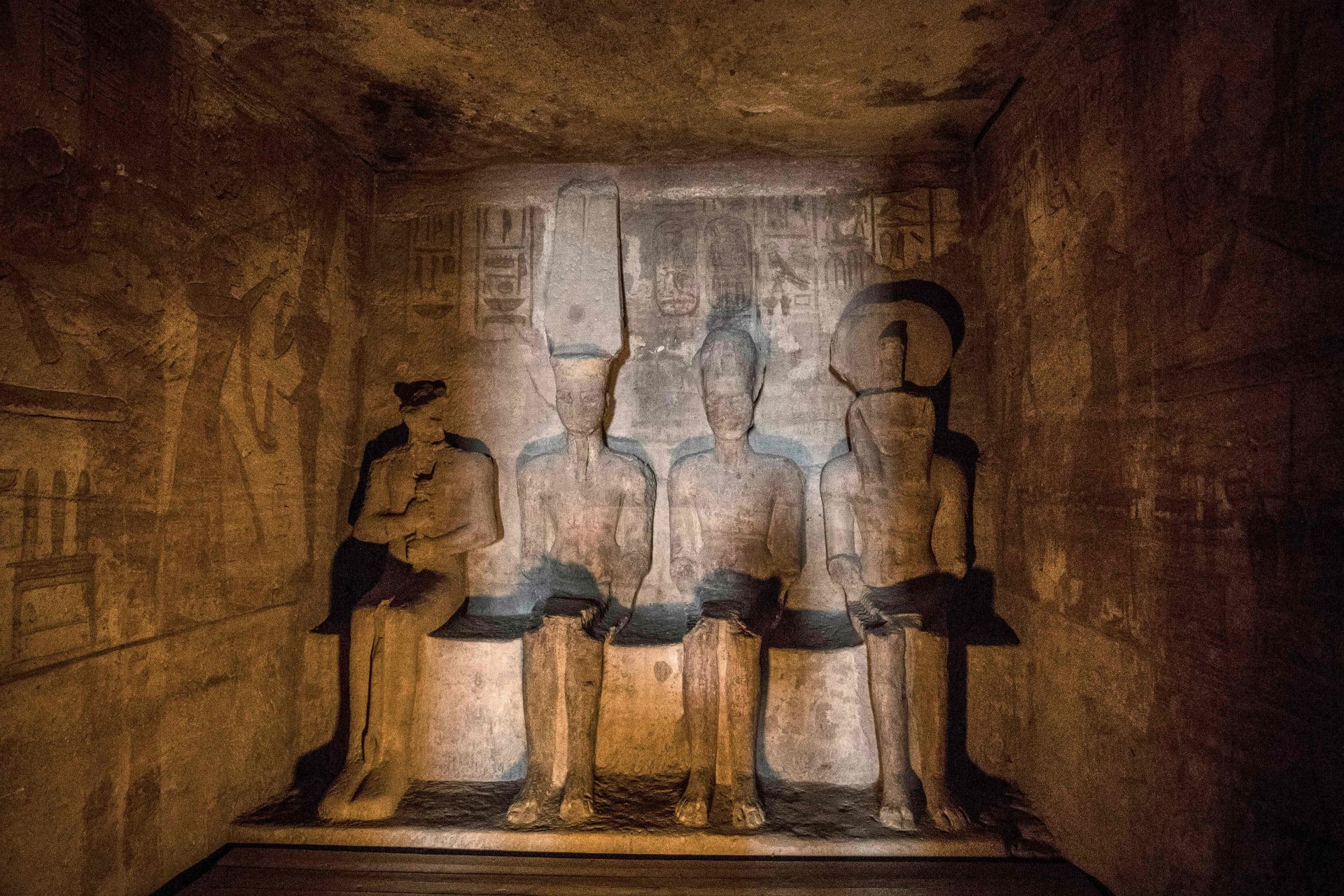On February 22nd, 2024, a unique celestial event unfolded at the majestic Abu Simbel Temple in Aswan, Egypt. As the first rays of dawn pierced the horizon, they cast a golden light upon the colossal statue of Pharaoh Ramses II, bathing his face in its warm glow for a brief 20 minutes. This awe-inspiring phenomenon, occurring twice a year, is a testament to the ingenuity of ancient Egyptian engineering and serves as a powerful reminder of the enduring legacy of Ramses the Great.
A Feat of Ancient Engineering
The Abu Simbel complex, carved directly into the sandstone cliffs, was built by Ramses II during the 13th century BCE. The precise alignment of the temple’s inner sanctum with the sun’s path was no accident. Ancient architects meticulously calculated the sun’s movement to ensure that on specific days, its rays would penetrate the temple’s depths, illuminating the statues within.
A Royal Celebration
The two annual occurrences of this phenomenon, February 22nd and October 22nd, coincide with significant dates in Ramses II’s life. February 22nd is believed to be his coronation anniversary, while October 22nd marks his birthday. This alignment, therefore, becomes a symbolic celebration of the Pharaoh’s reign, further emphasizing his power and connection to the divine.
A Timeless Legacy
Witnessing the sun illuminate Ramses II’s statue is a truly unforgettable experience. It is a powerful reminder of the incredible achievements of ancient civilizations and the enduring legacy of this iconic ruler. The event also serves as a bridge between the past and present, allowing us to appreciate the intricate relationship between astronomy, architecture, and religious beliefs in ancient Egypt.
Plan Your Visit
If you ever find yourself in Aswan, make sure to include Abu Simbel Temple on your itinerary. While you may not be able to witness the sun’s rays illuminating the statues, the sheer grandeur of the temple and the fascinating story behind its construction are sure to leave a lasting impression.

